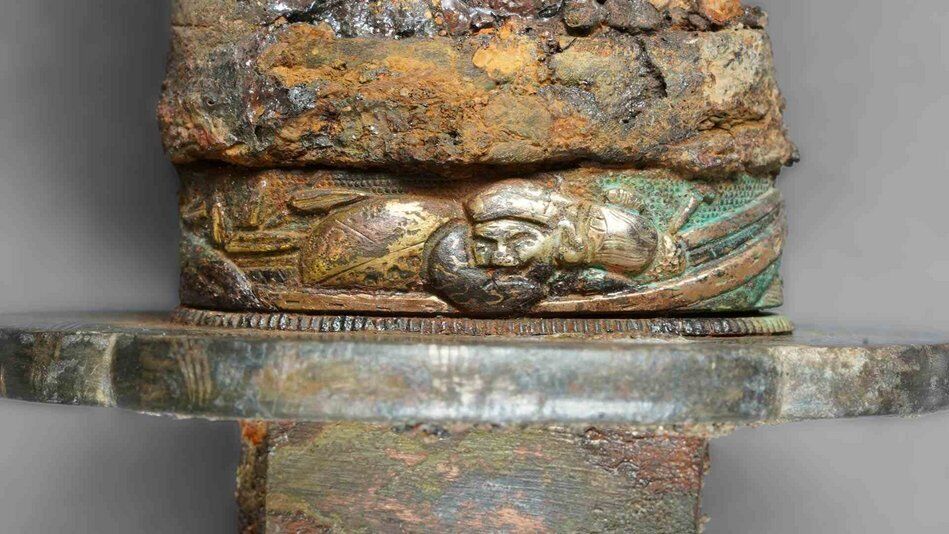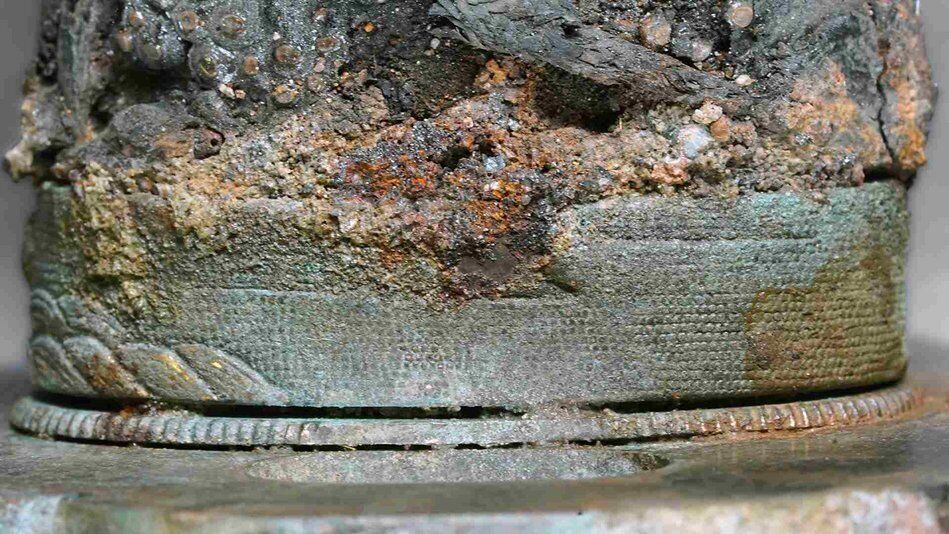News
A 17th-century Japanese samurai sword was found among the wreckage of World War II in Germany. Photo
Archaeologists in Germany have found a rare Japanese samurai sword from the 17th century. The sword was among the rubble of a basement destroyed during World War II.
The team discovered the highly corroded short sword, known as a wakizashi, during excavations of Molkenmarkt, Berlin's oldest square. Initially, archaeologists believed that this weapon was a military ceremonial saber, but further analysis showed that the sword was actually from Japan during the Edo period (1603-1868), Live Science writes.
According to a translation of a statement from the Museum of Prehistory and Early History of the Berlin State Museums, the blade of the weapon may be even older and probably dates back to the 16th century. Archaeologists believe it may have been brought to Germany in the 1800s as part of a diplomatic mission.
"Who could have imagined that at a time when Japan was isolated and European travelers hardly ever visited the country, such a long-used and richly decorated weapon would end up here in Berlin?" Matthias Wemhof, Berlin's state archaeologist and director of the Museum of Prehistory and Early History, said in a statement.
The sword was found during excavations of the basements of residential and commercial buildings on Molkenmarkt, which were turned into ruins during World War II and covered with streets and intersections in the 1960s. According to the statement, the former cellars were filled with war-related artifacts, including bridles, stirrups, curbs, and harnesses, which were disposed of at the end of the war. But the discovery of a Japanese sword in one of the cellars was unexpected.
Now, restoration work has revealed that the weapon was a fragment of a wakizashi, a sword that "was once reserved for high-ranking individuals as a weapon associated with status," Wemhof said. Historically, the wakizashi was carried by samurai as a backup weapon if they needed to fight in a small room or close to a target where it would be difficult to draw a longer sword known as a katana. According to the British Museum, they are also known as "companion sword" – they were always carried by men of the samurai class.
The wooden handle of the newly discovered sword was damaged by high heat, but the pieces of wood and textile wrappings on the sword were still intact. Further restoration revealed a 1-centimeter-wide tip and a metal ring at the base of the handle near the blade that depicted Daikoku, one of the seven gods of luck in Japan.
The team also found already damaged painted chrysanthemum flower decorations and water lines on the sword's guard. The style of the sword indicates that it comes from the Edo period.
Only verified information is available on the OBOZ.UA Telegram channel and Viber. Do not fall for fakes!






























